I. Rulemaking for Private Funds
Over the past year, the China Securities Regulation Commission (CSRC) has gradually shifted its regulatory focus on private funds from an overall “rule establishment and improvement” approach to a “targeted inspections and law enforcement” approach.
We can identify changes when comparing the CSRC’s legislative work plans issued in 2024 and in 2025, in the “rules to be promulgated within the year” category. For example, the current Interim Measures for the Supervision and Administration of Private Investment Funds (hereinafter referred to as Private Fund Measures) were issued in 2014. After the implementation of the Regulations for the Supervision and Administration of Private Investment Funds on September 1, 2023, the CSRC intended to amend the Private Fund Measures by publicly soliciting comments on the draft version at the end of 2023 and included this in the “rules to be promulgated within the year” in its 2024 annual legislative work plan. However, the CSRC did not publish the amended Private Fund Measures, nor was it listed in the 2025 annual legislative work plan under “rules to be promulgated within the year.” To date, there has been no more information indicating that departments within the CSRC or the Asset Management Association of China (AMAC) have engaged in legislative consultation or are soliciting comments regarding amending the Private Fund Measures. This suggests that an amended version of the Private Fund Measures is unlikely to be promulgated in the short term.
We also observed that in the recent years, the CSRC and the AMAC have increasingly shifted their regulatory practices in the private fund sector toward administrative inspections and enforcement actions. Regulatory authorities differentiate between small- and medium-sized private funds and large private funds with significant influence on the capital markets and concentrate the limited regulatory resources to address more critical issues. For smaller private funds, the focus remains on regulating operations and protecting fund investors. For large private funds, particularly those that are large quantitative fund managers, the emphasis is on furthering the understanding of their strategies and market impact and strengthening supervision from a risk prevention perspective, in line with the formation and improvement of A-share market program trading system. The regulatory focus for the private fund industry has transitioned from improving private fund rules to a problem-oriented and targeted enforcement approach.
II. Inspections and Enforcement of Private Funds
In addition to the routine administrative inspections and enforcement actions conducted by local CSRC offices and the self-regulatory oversight carried out by the AMAC, media reports indicate that several local CSRC offices (such as those in Shanghai, Zhejiang and Jiangxi) have recently issued notices to private fund managers under their jurisdiction. These notices require private fund managers to undertake activities to standardize their operational practices within a specified timeframe, including organizing focused learning sessions, participating in compliance training, and conducting self-assessments and self-corrections. These self-assessments cover various aspects of private fund operations, including fundraising, investment and trading, internal control and risk management, information disclosure and reporting, as well as investor suitability.
Historically, the private fund industry has been distinguished by a number of small funds known as “grassroots finance,” which have often exhibited lax compliance with regulatory requirements, detrimental to investor interests. We have observed that the regulatory authorities differentiate among private funds of varying sizes in practice. For large funds (with an AUM size more than several billions of Renminbi), regulatory authorities tend to focus more on understanding their strategies and operations, while for numerous small private funds, limited resources are concentrated on targeted self-disciplinary or enforcement actions. According to media reports, data from the AMAC indicates that as of April 30 this year, nearly 200 self-disciplinary actions have been issued against private funds and their executives for violations, representing a significant increase compared to the same period last year.
The differentiation of private funds by AUM size aids the CSRC in guiding the industry through regulatory policies and achieving its objectives through the deterrent effect of law enforcement. Additionally, a change in the regulatory focus may encourage larger private fund managers to prioritize compliance and strengthen their compliance frameworks. One media report suggested that, following this regulatory trend, the CSRC’s requirements for the compliance levels of leading private fund managers may gradually align with those applicable to publicly raised investment funds.
III. Self-Inspections on Quant Funds
According to media reports, in the latest round of self-inspections led by local CSRC offices, self-inspection requirements distinguished between discretionary strategy funds and quantitative strategy funds. For quant funds, managers were required to conduct self-inspections on the following matters:
(a) Whether all Beta exposure risks in market neutral products are fully covered;
(b) Whether investment portfolios exhibit any style or factor exposure upon hedging;
(c) Whether model risk stress tests have been thoroughly implemented and executed;
(d) Whether backtesting models adequately consider tail risks;
(e) Whether strategies fairly treat different products, investors, and proprietary trading accounts;
(f) Whether programmatic trading is equipped with reasonable risk control constraints;
(g) Whether order submission algorithms sufficiently incorporate liquidity considerations;
(h) Whether IT system reliability has been assessed in a reasonable manner;
(i) Whether the potential risks and leverages associated with derivative businesses have been fully disclosed to investors;
(j) Whether a mechanism for performance attribution analysis has been established.
Media reports also highlight that, given the deep integration of capital market development and financial technology, quantitative trading has become a significant force in China’s financial markets. The new round of specialized market research targeting leading quant funds launched by the CSRC focused on three areas: 2024 profit and drawdown situations, sources of excess returns, and the effects of AI models used in quantitative strategies.
The timing of this self-inspection coincided with some market volatility in early April when public doubts resurfaced about high-frequency-trading (HFT) strategies. Performance fluctuations among quant funds were significant during the first half of the year, with notable differentiation among different managers. Issues have also emerged regarding the use of AI in quantitative strategies, particularly concerning questions over the fairness of algo trading in highly volatile stock market conditions.
Combined with the upcoming Shanghai Stock Exchange (SSE) and Shenzhen Stock Exchange (SZSE)’s implementation of the Rules for the Management of Program Trading, there has been speculation that the CSRC’s demand for specialized market research and extensive self-inspections reflects a prudent regulatory attitude and serves as a reminder to leading quant fund managers.
To effectively navigate the ever-changing market landscape and given the volatility in China’s A-share market this year, it is essential for leading quant fund managers to prepare for potential risks, strengthen their risk control measures, and improve compliance standards.






